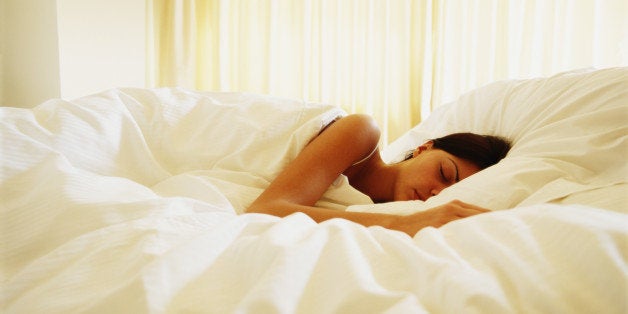
Back pain can make it tough to get a good night's sleep. On the other hand, certain sleep positions can ease the strain on an aching back.
Somewhat of a vicious cycle exists between back pain and sleep problems, but it's not well understood. "There is not a lot of science behind sleep as a major cause of back pain," says Santhosh Thomas, DO, a spine specialist with the Cleveland Clinic and associate medical director of the Richard E. Jacobs Medical Center in Avon, Ohio.
Experts do believe, however, that people with sleep problems experience more problems with back pain. "Sleep deprivation is known to affect mood and functional ability and negatively impacts perception of pain," Dr. Thomas says. Pain in turn can affect the quality of your sleep, according to the National Sleep Foundation, leading to a lighter sleep state and more frequent waking throughout the night.
A study of more than 3,100 people, published in the Asian Spine Journal in 2014, found that more than 32 percent of those with low back pain suffered from sleep disturbances as a result of their back pain, waking at least twice during the night. Researchers also found that the worst time for back pain was between 7 p.m. and midnight, and that the worse the pain, the more sleep was affected.
Some sleep positions can put added pressure on your neck, shoulders, hips, lower back, knees, and even your heels, all of which can lead to pain, Thomas says. There's no one-size-fits-all sleep position to kick back pain, but you can try a few tricks to get it under control so that you can sleep more soundly.
Worst Sleep Positions For Back Pain
Stomach sleepers may need to rethink their sleep stance because this position is a common offender.
"Typically, sleeping on your stomach can flatten the natural curve of your spine, putting some additional strain on your back muscles," Thomas says. Plus, stomach sleeping means that your neck is rotated, which can actually result in back pain between your shoulders, says Paul Grous, MSPT, a physical therapist and spine specialist with Good Sheppard Penn Partners in greater Philadelphia.
The real culprit though, he says, may not be sleep position but your daily activity -- or a lack of it.
"My opinion of the biggest causative factor for back pain in our population is the amount of time we spend sitting during waking hours," Grous says. "We sit too long and we don't sit properly -- we sit slouched with our backs rounded." During daylight hours, try to stand as much as possible, and practice good posture when standing and sitting to help ease back pain at night.
Don't worry about keeping your body in the same position all night. It's normal for you to move around a bit while you sleep, and that's a good thing as a little movement can help ease pressure on your back. "Any sleeping position has the potential to amplify back pain if you maintain it for too long," Thomas says.
- If you're a back sleeper: Put a pillow under your knees to allow your spine to maintain its natural curve.
- If you're a stomach sleeper: Put a pillow under your lower abdomen and pelvis to ease back strain.
- If you're a side sleeper: Draw your legs up slightly toward your chest and sleep with a pillow (a full body pillow can be comfortable) between your knees.
The Right Sleep Spot
Thomas says personal preference and comfort rule when it comes to selecting a mattress and pillow. Some people prefer the firmness of a harder mattress, while others are more comfortable on a soft mattress. He suggests spending a night in a hotel that offers options for guests to purchase pillows and mattresses so that you can try before you buy. Or, see if your mattress store lets you try out a bed overnight or even longer. "If that is not an option, perhaps sleeping on the floor in a sleeping bag may mimic a firm surface, and sleeping on a couch may mimic a softer surface," Thomas says.
Grous says that some people may find it helpful to use a contoured pillow to alleviate neck strain or to sleep on just one pillow instead of a stack of several pillows.
If a few changes to your sleep position don't help your back pain or sleep troubles, it may be time to get a medical opinion. If your pain worsens, Thomas recommends meeting with your doctor to check for any potentially serious problems.
More from Everyday Health:
Snow-Shoveling Your Way to the ER
6 Ways to Change Your Bad Holiday Habits
Why Eating in Moderation Is Meaningless Advice
Switch Your Sleep Positions To Ease Back Pain originally appeared on Everyday Health

